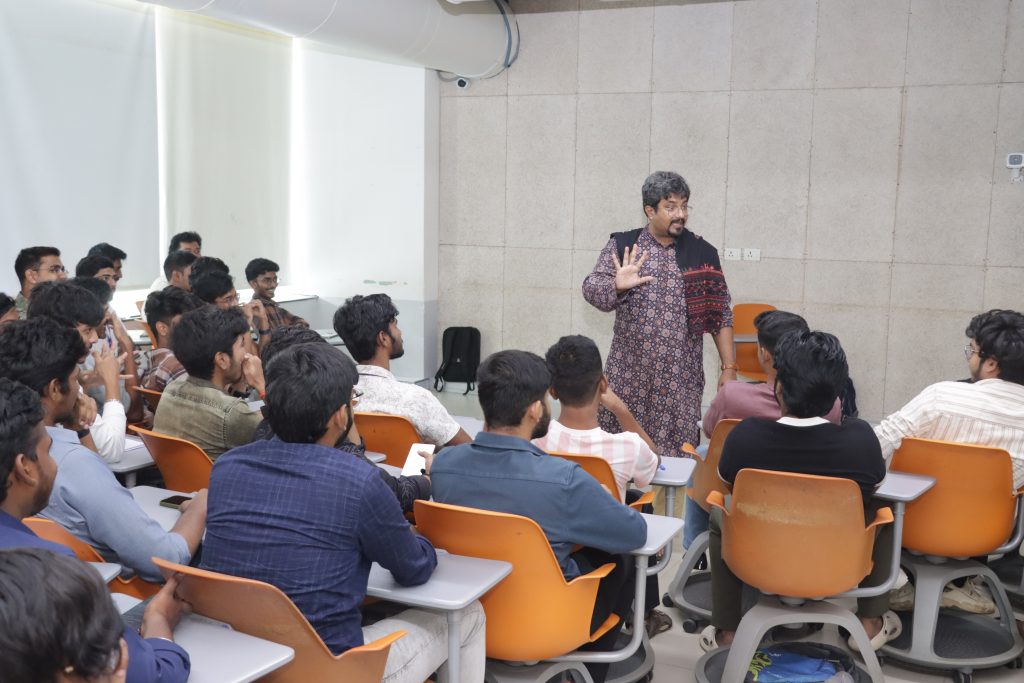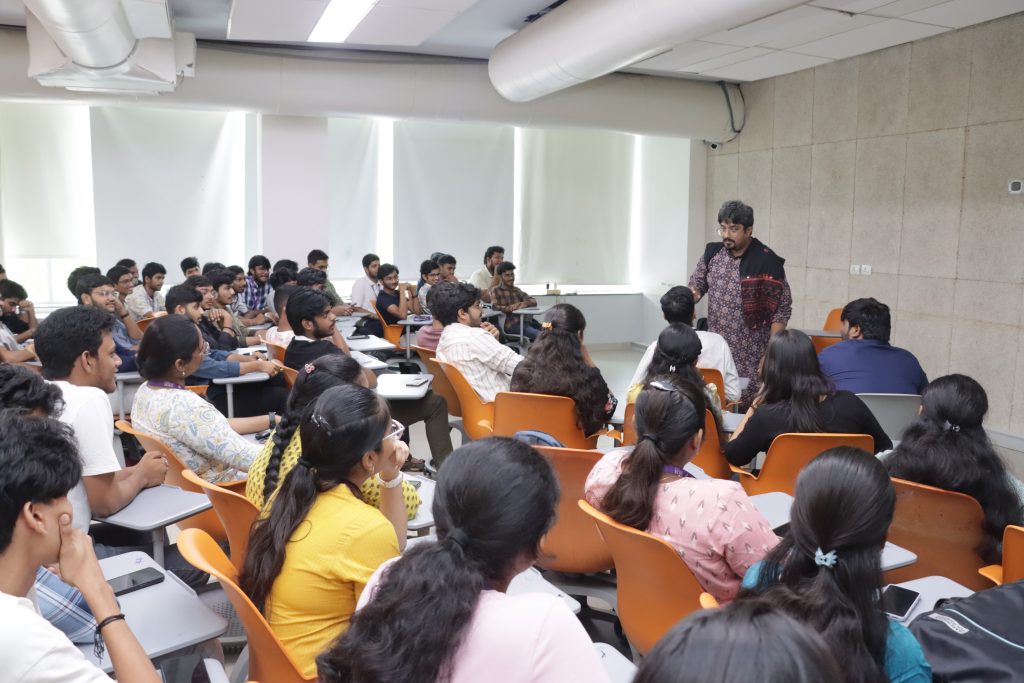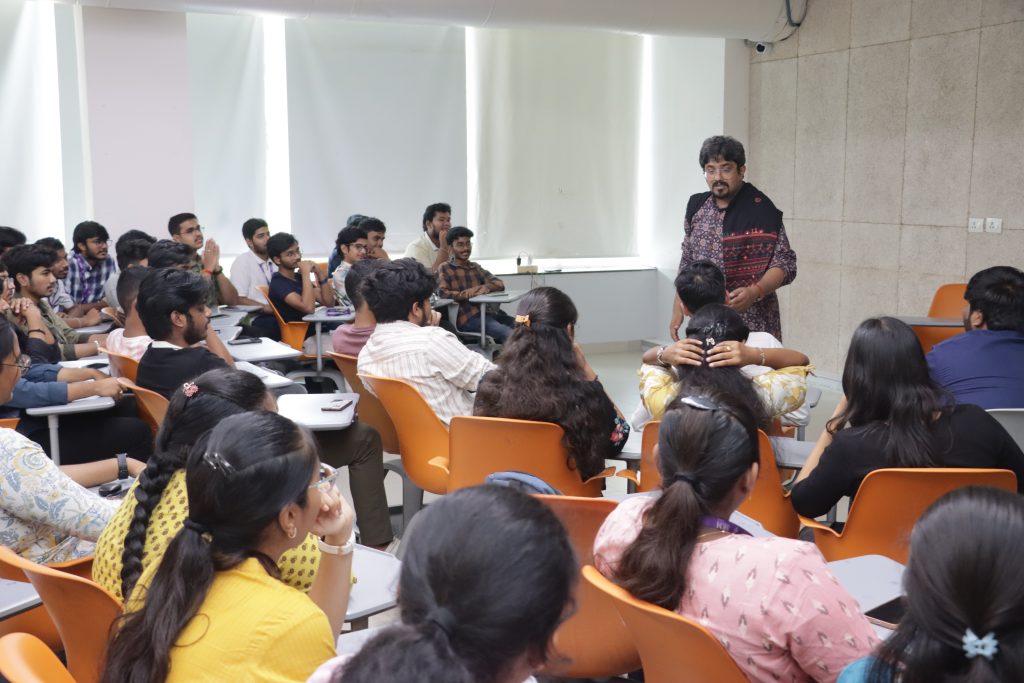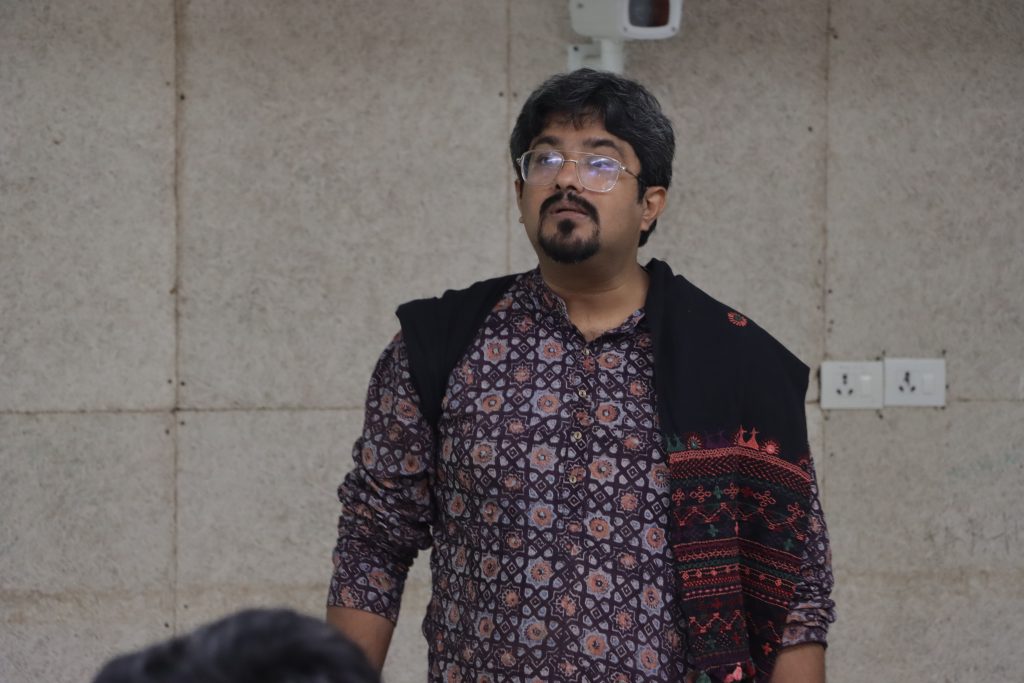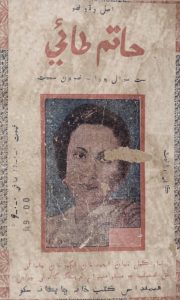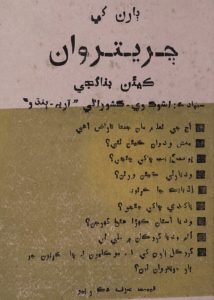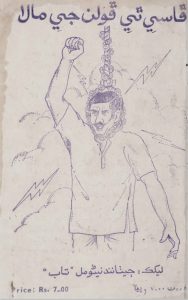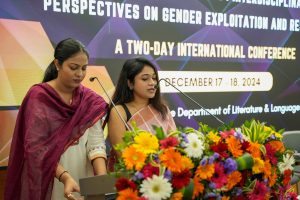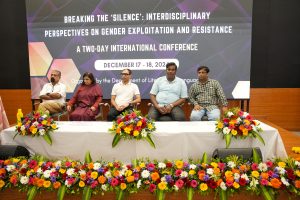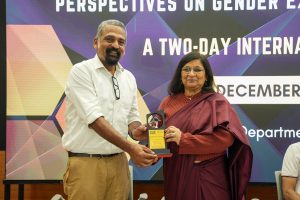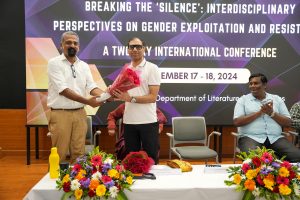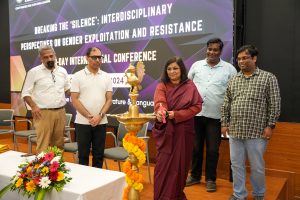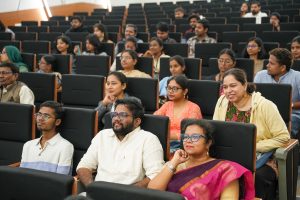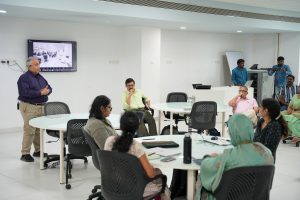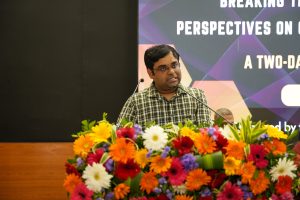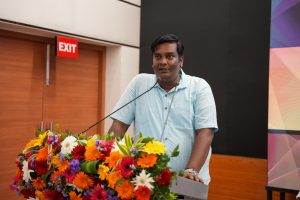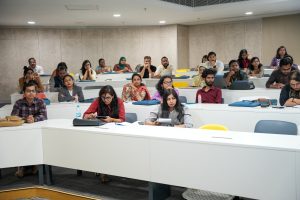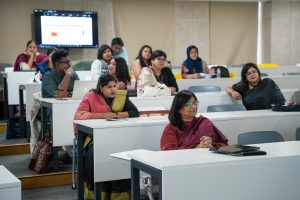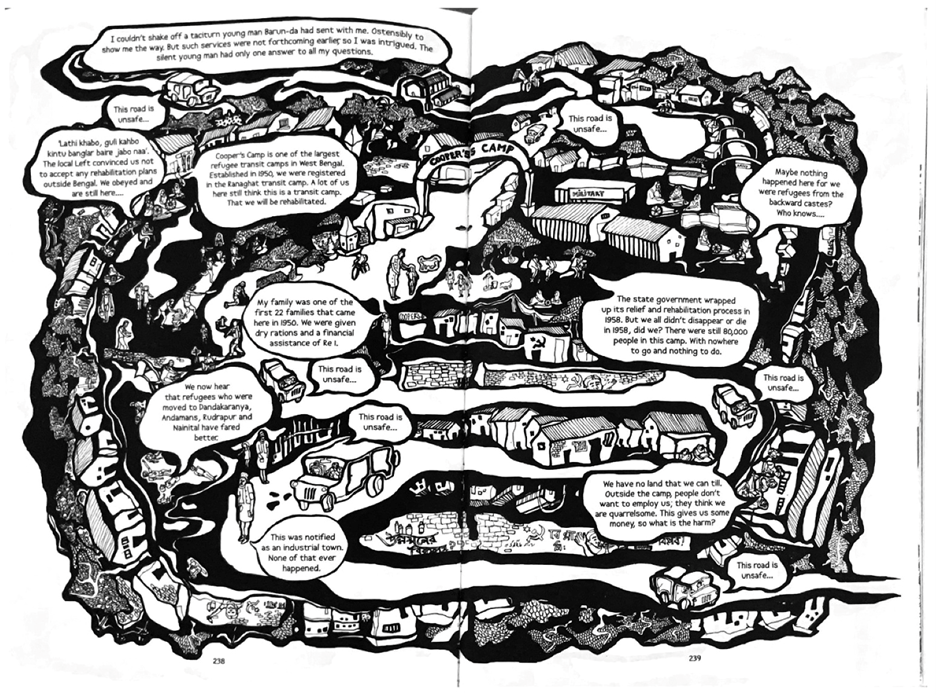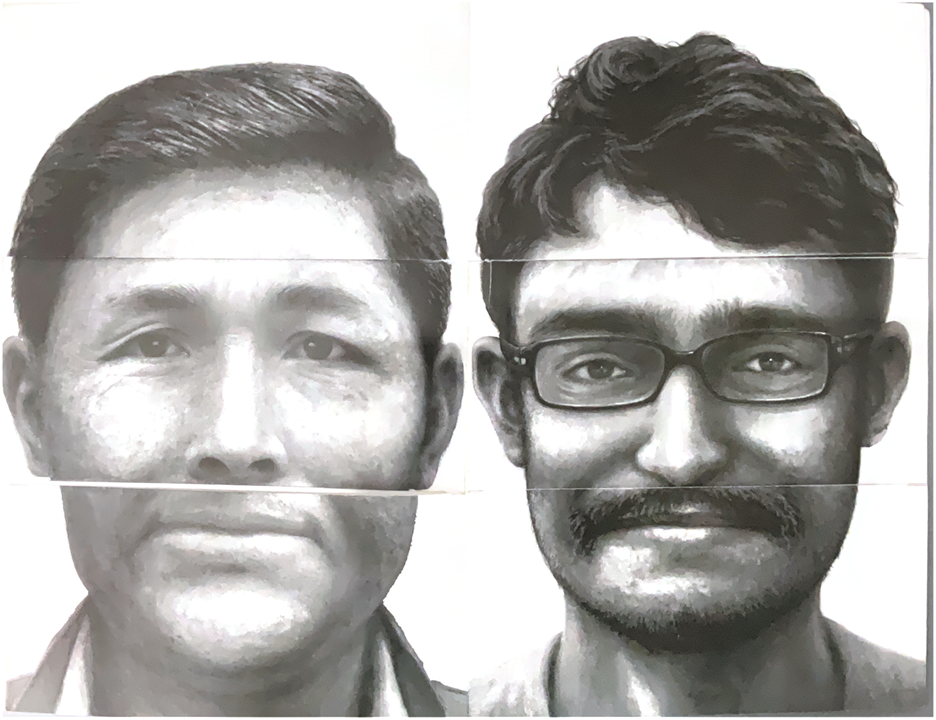Dr Sayantan Decodes Gender Paradox in Bāul Philosophy
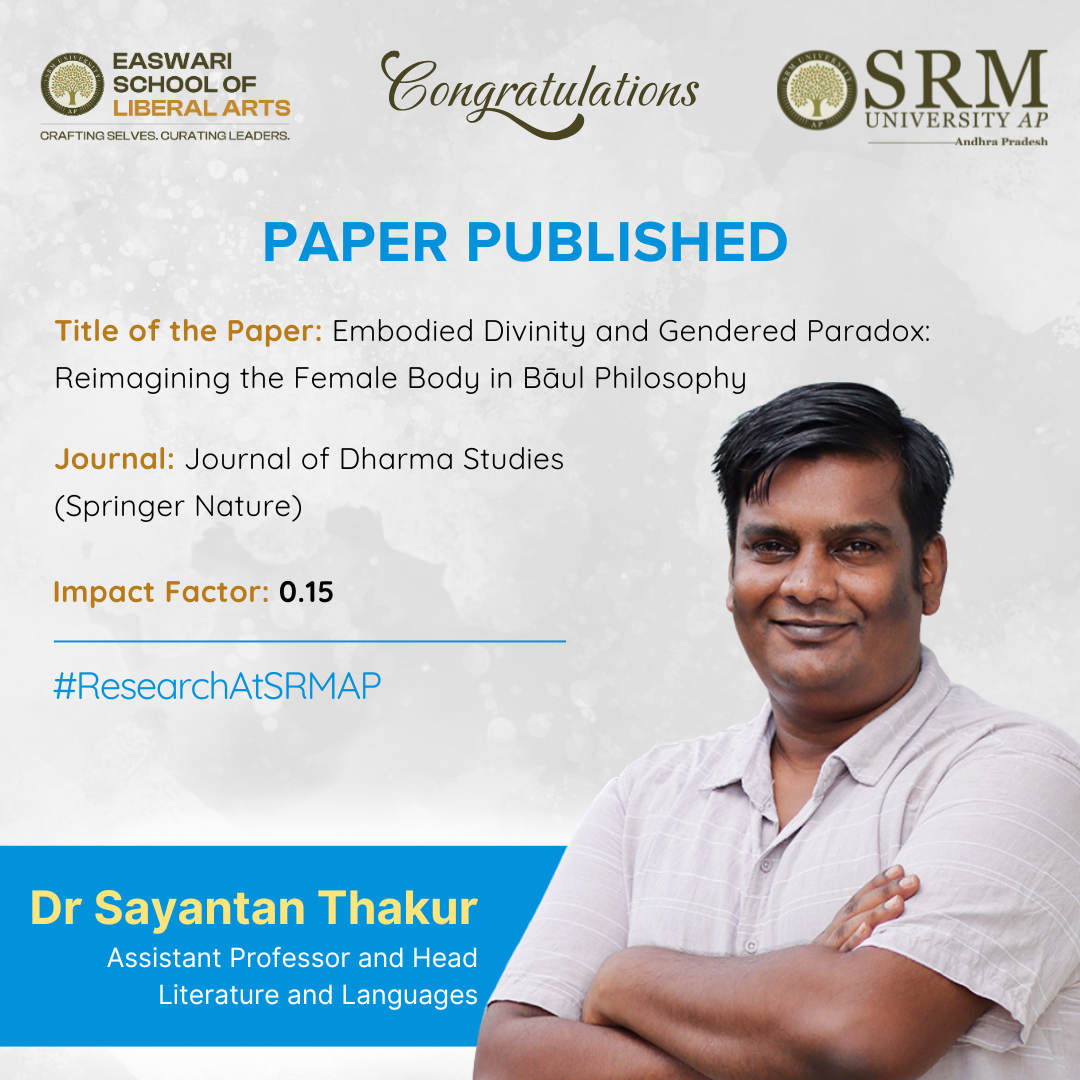 Dr Syantan Thakur, Assistant Professor at the Department of Literature and Languages in the Easwari School of Liberal Arts, analyses the Bāull Philosophy through its stories and songs, which project women as a vessel for spiritual realisation and at the same time subject her individuality so as to idealise patriarchal norms. Read the interesting excerpt about his paper to learn more about the topic.
Dr Syantan Thakur, Assistant Professor at the Department of Literature and Languages in the Easwari School of Liberal Arts, analyses the Bāull Philosophy through its stories and songs, which project women as a vessel for spiritual realisation and at the same time subject her individuality so as to idealise patriarchal norms. Read the interesting excerpt about his paper to learn more about the topic.
A Brief Abstract of the Research
This research explores how the Bāul tradition of Bengal represents the female body within its mystical and countercultural spiritual philosophy. Central to Bāul belief is deho-tattva—the philosophy that the human body, especially the female body, is the vessel through which spiritual realization is possible. The paper critically examines how women’s bodies are portrayed as sites of divine power (śakti) but are simultaneously idealized in ways that risk reinforcing patriarchal structures. By drawing on feminist theorists like Simone de Beauvoir, Judith Butler, Luce Irigaray, and Rita Gross, the study interrogates whether the Bāul tradition’s symbolic reverence of women genuinely affirms women’s agency or instead reduces them to metaphors for male spiritual advancement. Using Bengali Bāul songs, ethnographic insights, and comparative references to other South Asian mystical traditions, this research argues that the Bāul approach embodies both liberatory and constraining elements for women. The paper calls for an intersectional feminist lens to reconcile these contradictions and to imagine a spiritual practice that fully recognizes the lived experiences and autonomous subjectivity of women within the Bāul cosmos.
Explanation of the Research in Layperson’s Terms
This study looks at a group of mystical singers and spiritual practitioners in Bengal called the Bāuls. They believe that the human body, especially a woman’s body, is sacred and full of divine power. Unlike some other religious traditions that say we should reject the body to find God, the Bāuls say we should honor the body because it connects us to the divine. However, there’s a twist: while the Bāuls praise women’s bodies as powerful and holy, they often do this in ways that turn real women into symbols instead of seeing them as people with their own voices and choices. My research asks: does calling a woman “divine” really help her in everyday life, or does it just make her part of someone else’s story? By studying Bāul songs and talking about feminist ideas, my work tries to show both sides of this spiritual practice—how it can free women from some social limits but also how it might quietly keep old inequalities alive. In the end, it’s about finding a fair balance between spiritual ideas and real-life respect for women
Practical Implementation and Social Implications
This research has important implications for how we think about gender, religion, and cultural traditions today. First, it encourages scholars, artists, and spiritual communities to look critically at how women are represented—not just as sacred symbols but as real people with voices and choices. For Bāul practitioners and followers, the study invites reflection on how to preserve the liberating parts of their tradition while addressing parts that may still reflect patriarchal ideas. Socially, the paper highlights the need for conversations about how spirituality and feminism can work together, especially in India where women often face both religious and cultural restrictions. By showing how the Bāuls both challenge and sometimes uphold old gender roles, this research can help communities, policymakers, and educators find better ways to support women’s rights within cultural practices. Practically, it suggests that empowering female Bāuls—called Bāulinīs—to share their own stories, perform publicly, and teach in their own voices can shift the tradition toward greater gender equality. Overall, this study shows that spiritual traditions can be part of modern conversations about gender justice if we approach them with openness, respect, and critical thinking.
Future Research Plans
- Regional Literature in Translation
- Tantric Tradition and Eastern Indian Literature
- Folk Music of Bengal
- Indian Philosophy, Aesthetics & Literature
- Published in Departmental News, English Current Happenings, English news, News, Research News
Review of The Bloomsbury Handbook to the Digital Humanities (DH)
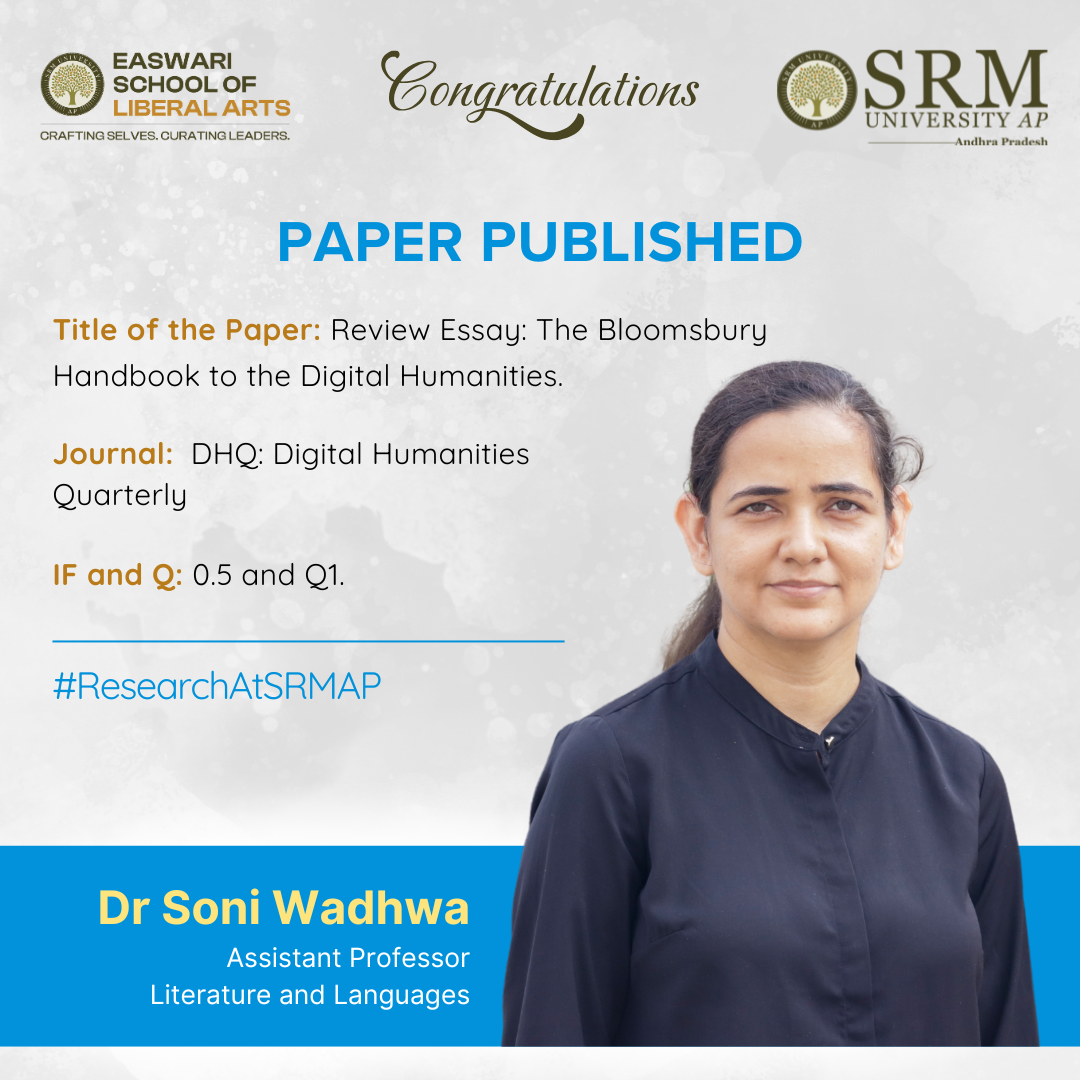 A handbook is a complex and demanding genre, it must offer a comprehensive overview of a field, articulating its foundational principles, charting ongoing debates, and identifying potential future directions. Such volumes are often judged as much by what they exclude as by what they include. Within this context Dr Soni Wadhwa, Assistant Professor in the Department of Literature and Languages, approached “The Bloomsbury Handbook to the Digital Humanities” in her review essay published in the Q1 journal “DHQ: Digital Humanities Quarterly”.
A handbook is a complex and demanding genre, it must offer a comprehensive overview of a field, articulating its foundational principles, charting ongoing debates, and identifying potential future directions. Such volumes are often judged as much by what they exclude as by what they include. Within this context Dr Soni Wadhwa, Assistant Professor in the Department of Literature and Languages, approached “The Bloomsbury Handbook to the Digital Humanities” in her review essay published in the Q1 journal “DHQ: Digital Humanities Quarterly”.
Abstract
The Bloomsbury Handbook, edited by James O’Sullivan is framed as a forward-looking resource aimed at fostering further developments in the field of digital humanities (DH). In his introduction, O’Sullivan notes that the volume is designed to serve three categories of readers: DH experts, the DH-curious, and skeptics. The collection is divided into five thematic sections: “Perspectives & Polemics,” “Methods, Tools, & Techniques,” “Public Digital Humanities,” “Institutional Contexts,” and “DH Futures.” Each section features chapters that provide overviews of key subfields while engaging with specific methodological and theoretical issues.
In her review, Dr Wadhwa refrains from summarising all 43 chapters. Instead, she evaluates what the handbook offers to the different categories of readers it aims to serve. She highlights the volume’s self-critical tone and its ability to generate meaningful dialogue about the contributions and challenges of digital humanities in analysing culture and text.
Dr Wadhwa also addresses the misconceptions and hesitations that often surround digital humanities, particularly among scholars from humanities and social sciences who may feel excluded due to a lack of technical expertise. Her review seeks to demystify the field by showcasing exemplary work from leading scholars, thereby offering guidance to researchers interested in exploring DH.
Practical Implementations and Future Research plans:
She hopes that her essay will encourage aspiring researchers to delve deeper into the various subdomains of digital humanities and engage with the field with greater confidence. Dr Wadhwa emphasises the need for more accessible resources and institutional support for digital humanities, asserting its growing relevance within academia.
Looking ahead, she intends to build further on her work in the area of digital archiving which is a vital subdomain within digital humanities. She plans to write more extensively about the projects she has undertaken, contributing to the evolving discourse and practice of the field.
- Published in Departmental News, English Current Happenings, English news, News, Research News
Analysing the Dynamism of AR Comics Through Ram Devineni’s Priya Series
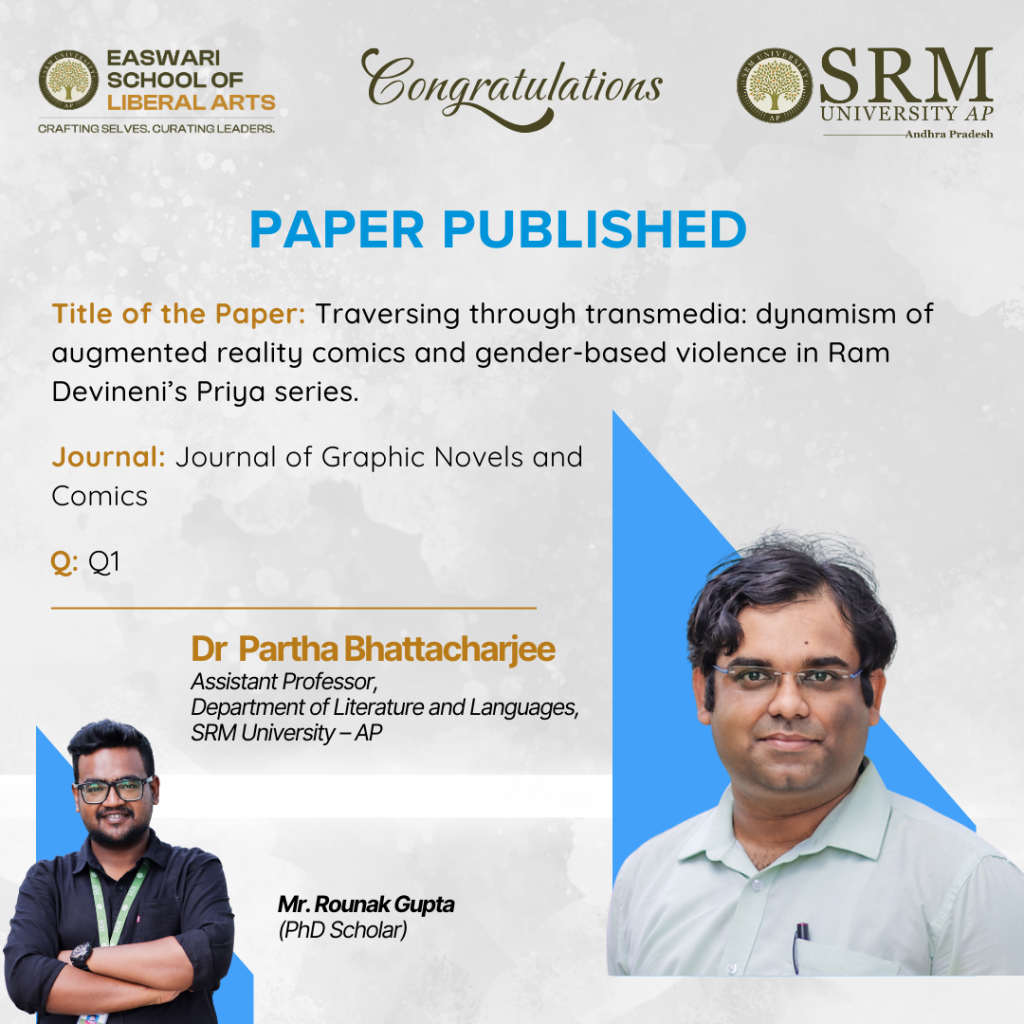
Dr Partha Battacharjee, Assistant Professor from the Department of Literature and Languages, and his PhD scholar Mr Rounak Gupta have published a research article titled “Traversing through Transmedia: Dynamism of Augmented Reality Comics and Gender-based Violence in Ram Devineni’s Priya Series” in the Q1 journal, Journal of Graphic Novels and Comics.
The paper points out how augmented reality can enhance the reading and receptive experience of comics that can address, teach, and educate people on complex social problems like gender-based violence.
Abstract
This article looks at how Ram Devineni’s comic series—Priya’s Shakti, Priya’s Mirror, and Priya and the Lost Girls—use augmented reality and Hindu mythology to raise awareness about gender-based violence in India. It shows how these comics break traditional storytelling methods to engage readers on serious issues like rape, acid attacks, and trafficking.
Practical Implementation/ Social Implications of the Research
It is an analytical research that helps understand how basic building blocks towards gender sensitisation can be developed using comics and augmented reality technology to ‘educate’ people in a much more immersive and interesting way.
The team will continue to develop a theoretical foundation for addressing transmedia approaches in comics and other seemingly static art forms.
Collaboration
Dr Priyanka Tripathi, Associate Professor, Department of Humanities and Social Sciences, IIT Patna
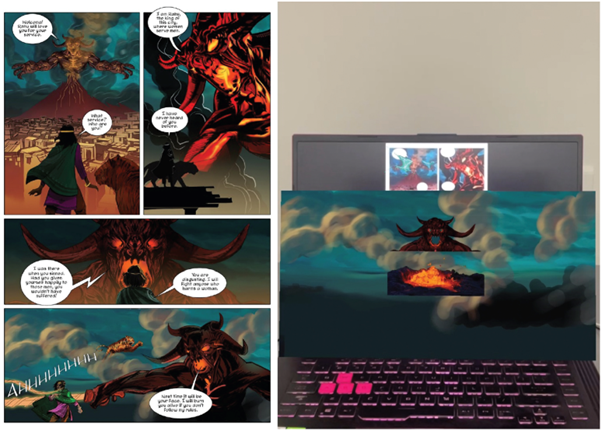
- Published in Departmental News, English Current Happenings, English news, News, Research News
Dr Mrinmoy Pramanick’s Guest Talk on Bengali Dalit Literature
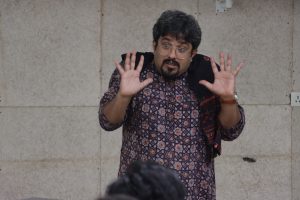 The Department of Literature and Languages at SRM University-AP organised a thought-provoking guest talk titled “Caste of Partition: Understanding Bengali Dalit Literature” on April 02, 2025. The event featured Dr Mrinmoy Pramanick, a distinguished scholar, Sahitya Akademi Award winner (2023), and Assistant Professor at the Department of Comparative Indian Language and Literature, University of Calcutta.
The Department of Literature and Languages at SRM University-AP organised a thought-provoking guest talk titled “Caste of Partition: Understanding Bengali Dalit Literature” on April 02, 2025. The event featured Dr Mrinmoy Pramanick, a distinguished scholar, Sahitya Akademi Award winner (2023), and Assistant Professor at the Department of Comparative Indian Language and Literature, University of Calcutta.
Dr Pramanick delivered an insightful lecture examining the complex relationship between caste, Partition, and Bengali Dalit literature. He quoted the historical trajectory of Partition, the Bangladesh Liberation War of 1971, which had a profound impact on Bengali Dalits, who faced displacement and marginalisation. He highlighted how Dalit experiences of Partition differ significantly from mainstream narratives. In his own words, “Dalit literature gave a new dimension to Bengali Partition History.”
The lecture also explored the representation of Partition in Bengali Dalit literature, focusing on notable works such as Sroter Sange by Narayan Gangopadhyay, Kundika by Samaresh Doshu, and Sokal Belar Alo by Shankar Mahadevan. Dr Pramanick emphasised how these literary works illuminate the challenges faced by Dalit refugees, including economic struggles, social discrimination, and identity crises. He also examined the influence of Ambedkarite ideologies in Bengali literature, especially in educational reforms, the establishment of institutions bearing Ambedkar’s name, and the translation and publication of his writings in Bengali. Dr Pramanick’s discussion underscored the transformative power of Dalit literature, stating, “It made history inclusive and for all.”
The session concluded with a highly engaging Q&A segment, where students, faculty members, and researchers actively participated. The discussion covered the role of caste consciousness in literary narratives, the socio-political impact of migration, gender roles, and the integration of Dalit literature into contemporary academia. Dr Pramanick’s responses offered deeper insights into marginalised perspectives on Partition and the significance of inclusive historical discourse.
Dr Mrinmoy Pramanick’s guest lecture was an intellectually enriching experience that provided a new perspective on the study of Partition through the lens of Bengali Dalit literature. The event successfully fulfilled its objective of fostering academic dialogue and promoting critical engagement with the socio-cultural dimensions of Partition and caste.
- Published in Departmental News, English news, News
The Anxiety of Indianness in the Making of Sindhi Literature
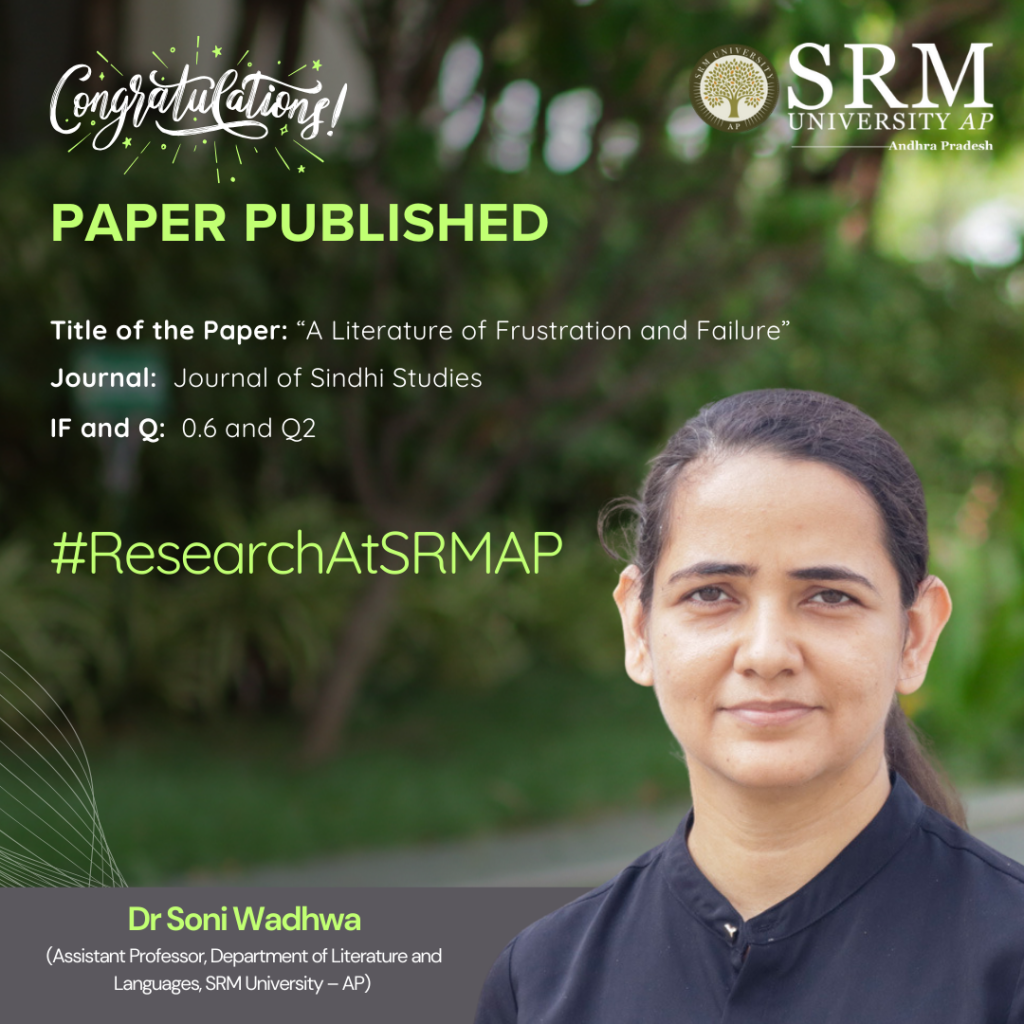
Very often, it is assumed that the “vernacular” language texts in India do not undergo any anxiety of proving themselves Indian while works written in English do. In her research paper, “A Literature of Frustration and Failure”: The Anxiety of Indianness in the Making of Sindhi Literature as an Indian Literature”, published in the esteemed Q2 journal Journal of Sindhi Studies, Dr Soni Wadhwa, Assistant Professor, Department of Literature and Languages, focuses on Sindhi post literary activity that unfolded in the first 20 years after independence to show that Sindhi has a history of going through anxiety of belonging in India.
Abstract
Studies of Partition frequently turn to literature to understand how displacement processes, among other things, impact aesthetics and representation. The article takes a broader view of aesthetics as representation: it demonstrates how turning to the literary archive of a moment and a community gives rise to questions about the politics of individual texts and literary historiography. Centred on Sindhi literature produced in India after Partition, it shows that examining the literary productivity of the community needs to involve questions of literature as political survival. It focuses on the earliest essays from the Sindhi literary scene in India (published in the Sahitya Akademi journal Indian Literature). The article argues that these essays register anxiety about the survival of a language trying to come into being in an already existing and complicated language-nation relationship. It unpacks three registers of anxiety visible in the literary archive to broaden the scope of the conversations around the Sindhi language and its literature.
This research has been conducted to advance interest in and conversations around Sindhi literature in India. Since Sindhi does not have a state in India, most people are not aware that it exists as a language and that it has a rich literary tradition.
After this article, Dr Soni Wadhwa intends to explore different writers, themes, and movements in Sindhi literature.
Collaborations
The research has been funded by George Mason University.
- Published in Departmental News, English Current Happenings, English news, News, Research News
Dr Bidisha on Translating Dalit Voices
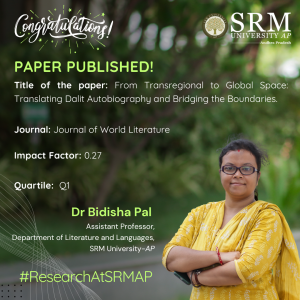 Translation often serves as a vital bridge between languages and cultures and Translators are often poised as “gatekeepers” who preserve the authenticity and richness of a text. Dr Bidisha Pal, Assistant Professor at the Department of Literature and Languages in her research paper, “From Transregional to Global Space: Translating Dalit Autobiography and Bridging the Boundaries” speaks of the power of translation in safeguarding and raising awareness of caste. Her work also illustrates how translation smoothens the divide between language and enables the voice of the marginalised to be heard.
Translation often serves as a vital bridge between languages and cultures and Translators are often poised as “gatekeepers” who preserve the authenticity and richness of a text. Dr Bidisha Pal, Assistant Professor at the Department of Literature and Languages in her research paper, “From Transregional to Global Space: Translating Dalit Autobiography and Bridging the Boundaries” speaks of the power of translation in safeguarding and raising awareness of caste. Her work also illustrates how translation smoothens the divide between language and enables the voice of the marginalised to be heard.
Abstract:
The present research brings forward some standpoints. First, the translation of Dalit autobiographies creates transnational solidarity. Second, the translators play the role of gatekeepers to show that translation sustains the literary and cultural essence ingrained within the texts and initiates and engages dialogic discussions among the audience and readers on the global platform. Third, the translation of Dalit autobiographies arrests the attention of those global readers who barely nurture any idea on caste, class, and casteist politics and deep-rooted issues like untouchability in India and constructs a distinct literary geography.
Explanation in layperson’s terms:
The research deals with the idea of literary translation and its necessity. These two autobiographies are written in regional Bengal. When translated, the boundary of regions gets dissolved, and the essence of the texts reach the global arena. Besides, translation also acts as the bridge to the outer world. However, oftentimes the act of translation is not an innocent act anymore; rather it interferes with the original meaning to transcreate.
Practical/ Social Implications:
The research talks about translation and its necessity to bridge boundaries. The texts that the article focuses on are from the people of the marginalized communities of Bengal who write to voice their concerns and who feature in a considerable period of history that should be known to people. Since, linguistic regionalism is the main constraint for the literary texts, translation provides the desired space and opportunity to help them reach the global platforms and their history and literature become part of the larger repertoire of World Literature.
The link to the article:
- Published in Departmental News, English Current Happenings, English news, News, Research News
Where Technology Meets Literature: Reviving Sindhi Libraries with a Digitised Five-point Framework
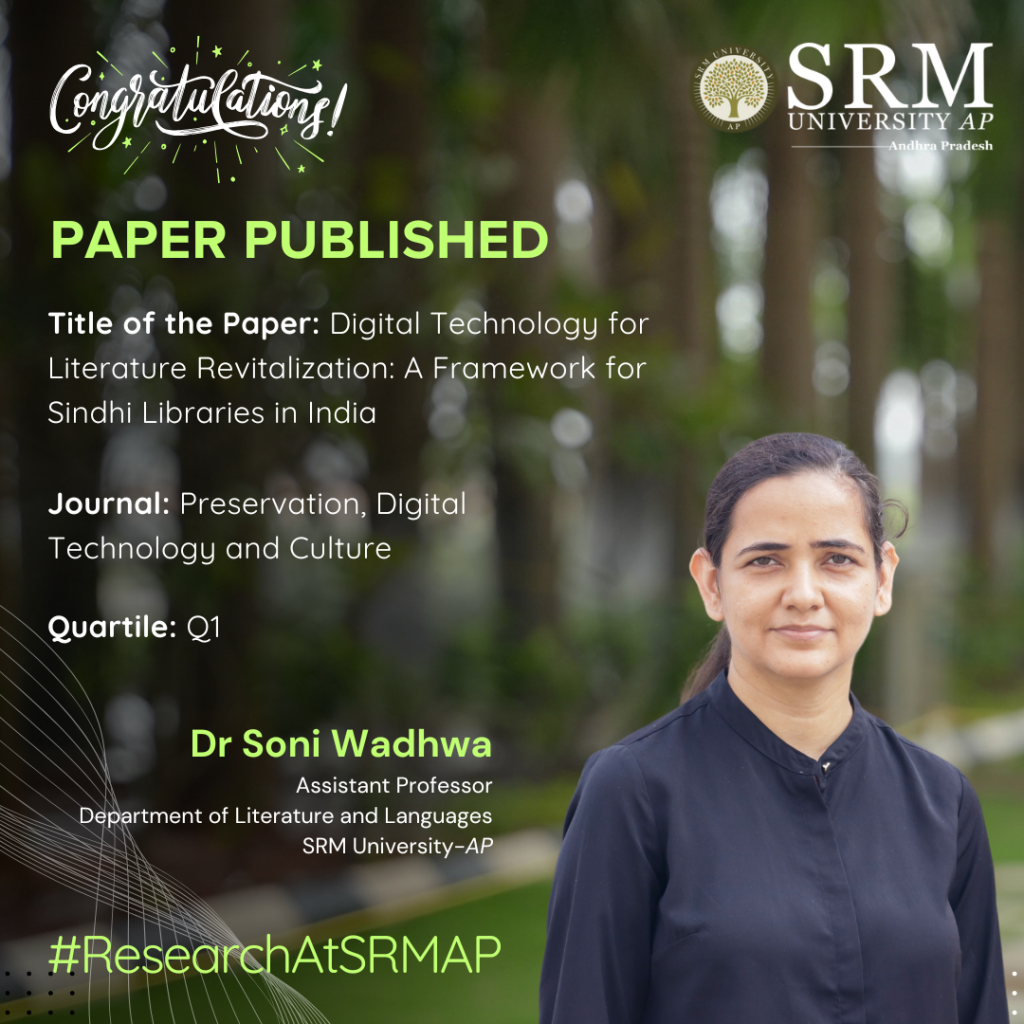
Minor languages face many challenges in India and elsewhere. With most of these languages on the verge of extinction, preservation efforts using technology need to develop a different vision for helping these languages and their communities. Dr Soni Wadhwa, Assistant Professor from the Department of Literature and Languages, has published her research in the article “Digital Technology for Literature Revitalisation: A Framework for Sindhi Libraries in India” in the Q1 journal Preservation, Digital Technology and Culture, highlighting on overcoming these challenges. Her research emphasises a five-point framework to revive Sindhi literature.
Abstract
Linguistic diversity does not find adequate space in LIS discourses around libraries in India and other regions with similar kinds of linguistic heritage. This study focuses on the state of Sindhi literature in India through a look at the libraries that house the works of Sindhi literary activity in post-Partition India. The objective is to highlight the role of libraries within language revitalization efforts. This study puts forth a five-point framework for digital transformation of Sindhi libraries in India which can help broaden the digital transformation efforts elsewhere in the Global South especially with minor languages and dialects. While the five-point framework is customized to the specific challenges faced by Sindhi regarding its script (and includes designing solutions for OCR, transliteration, and text to speech interaction), its principles could be applied to several other linguistic contexts, especially in the Global South. It, thus, seeks to bring LIS into sharp focus within the social imagination of communities of readers and as speakers of a language, and not just as academic institutions alone.
Practical Implementation/Social Implications of the Research
- Using this five-point framework, scholars from various fields (history, partition studies, language, literature, digital humanities, digital archiving, etc) can identify different ways of preserving the Sindhi language.
- The use of technology for this purpose can lead to technological innovation, which in turn can accelerate preservation efforts.
- Similar models and frameworks can be developed for other minor languages.
Collaboration
The project is funded by IIT Indore.
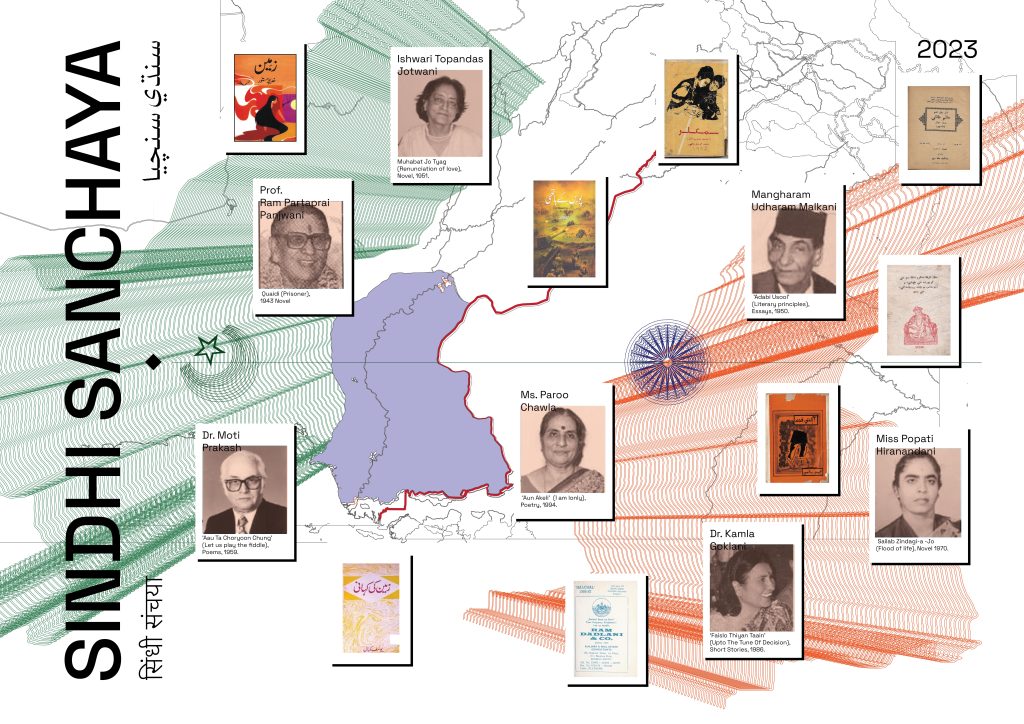
- Published in Departmental News, English Current Happenings, English news, News, Research News
Two-day International Conference on Gender Exploitation Concludes
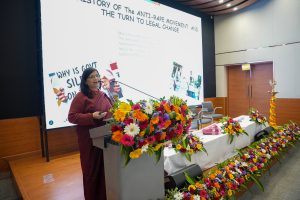 The two-day international conference on Breaking the Silence: Interdisciplinary Perspective on Gender Exploitation and Resistance organised under the auspices of SRM University-AP comes to a conclusion.
The two-day international conference on Breaking the Silence: Interdisciplinary Perspective on Gender Exploitation and Resistance organised under the auspices of SRM University-AP comes to a conclusion.
The international conference drew diverse audiences of academicians, academic experts, research scholars and students from across the country and outside, and featured talks by eminent academicians as Prof. Anita Singh, Department of English, Banaras Hindu University, Varanasi; Prof. Rajinder Dudrah, Professor of Cultural Studies and Creative Industries, Birmingham City University; Prof. Geetanjali Gangoli, Department of Sociology, Durham University; Prof. Nalini Iyer, Department of English, Seattle University; Prof. Priyanka Tripathi , Department of Humanities and Social Sciences, Indian Institute of Technology Patna.
The sessions explored themes of gender and resistance, intersectionality, trauma and survival and so on. With 5 guest speakers, over 70 research paper presentations and over 140 participants the conference offered multifaceted perspectives on Gender Exploitation and Resistance.
Prof. Vishnupad, Dean-Easwari School of Liberal Arts in his address stated, “Notwithstanding 60 odd years of feminist movements and scholarship, gender asymmetry and violence, is one of those archives that needs to be continually visited and revisited, because patriarchal forms and gender violence remains as rampant as it always was.” Further, while elaborating on violence, he questioned the easy equation of education with progress and conjectured on the relation of education and violence. The manic obsession in Indian society for engineering and medical degrees and its resulting impact on young school going students, for him, consisted of one such perverse instance; the annual student suicides number in places such as Kota amply instantiate that violence.
Dr Sayantan Thakur, Assistant Professor and Head – Department of Literature and Languages, remarked “Conferences such as these are both inspiring and daunting; while they convene bright minds capable of addressing critical issues, they also depict to us that challenges such as gender exploitation continue to be.”
Prof. Anita Singh from Banaras Hindu University in her keynote address cited several compelling instances wherein women were denied justice, reflecting thereby a troubled pattern of societal indifference.
The discourses in the conference addressed the multifaceted barriers that are posed within the system, compelling one to discuss, debate and deliberate and “break the silence” that surrounds gender exploitation.
- Published in Departmental News, English news, News
Decolonial Insights on Partition in Indian Comics
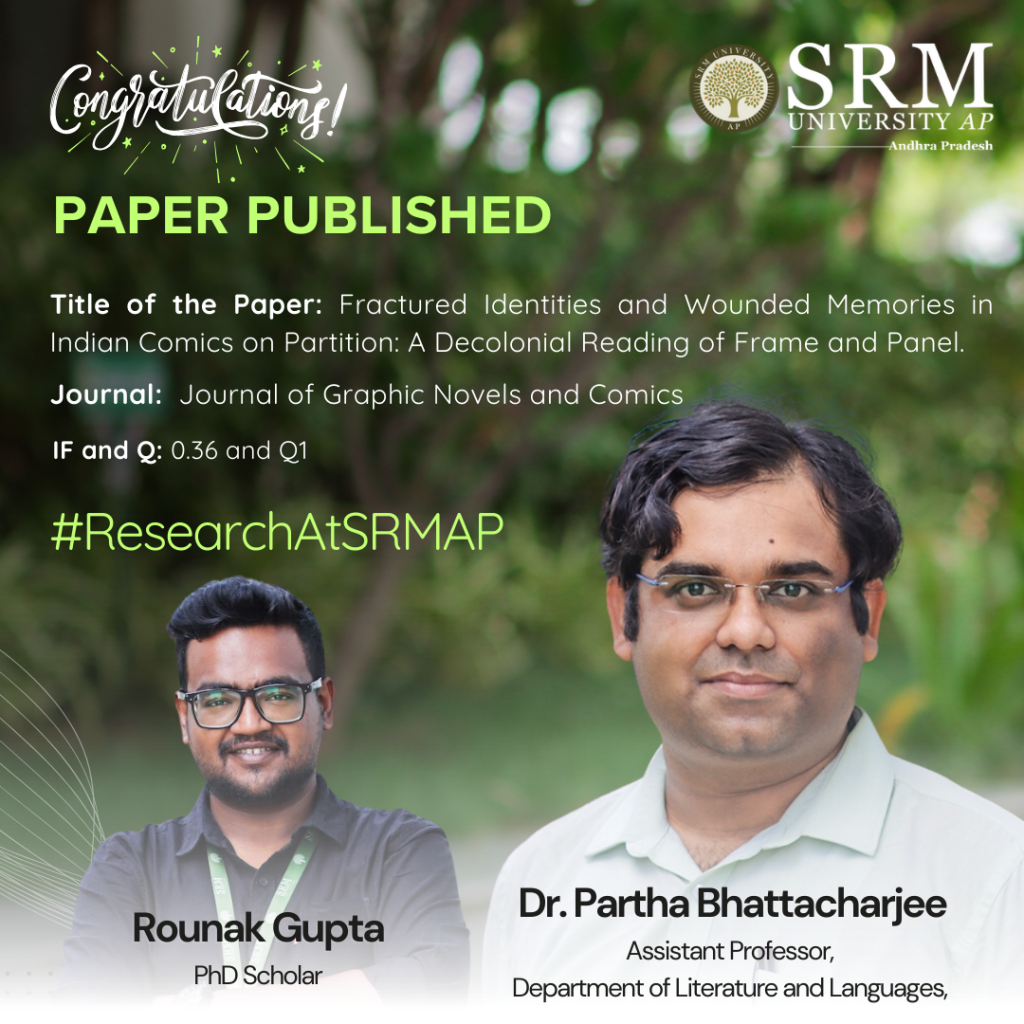
Dr Partha Bhattacharjee, Assistant Professor from the Department of Literature and Languages, along with his scholar Mr Rounak Gupta has published their paper titled “Fractured Identities and Wounded Memories in Indian Comics on Partition: A Decolonial Reading of Frame and Panel” in the esteemed Q1 journal Journal of Graphic Novels and Comics. This paper explains comics as a medium whose panels, frames, and stylistic aspects can be interpreted in the Indian context. This interpretation has been read as a decolonial intervention into the medium’s history and the established aesthetic theories.
Abstract
Within the liaison of decoloniality studies and comics studies, this paper investigates how the decolonial visual style in the comics anthology This Side That Side (2013) has been used to locate the traumatised past and violation of human rights due to the “b/ordering” practices of partition of India (Rifkind 2017; Bhattacharjee and Tripathi 2022). “The Taboo” by Malini Gupta and Dyuti Mittal, “An Afterlife” by Sanjoy Chakraborty, and “Making Faces” by Orijit Sen cultivate the stories of the inhumane condition of the migrants and victims during and after the Indo-Pakistan and Indo-Bangladesh-Pakistan partition. These narratives exemplify decolonised counter comics narratives on collective and personal memories (Chute 2016; Mickwitz 2016; Ahmed and Crucifix 2018) inflicted upon and against the dominant partition discourse. They help churn out the human stories of the interminable psychological violence of partition and post-partitioned reality.
The paradigm established in this research can later be used to interpret different formations within comics, especially pertaining to decolonial aesthetics, dialogue, and attitude.
Collaborations
This paper has been published as a part of a continuing study that began with the preceding paper – Bhattacharjee, Partha, and Priyanka Tripathi. 2022. “Penning the Pain of Partition: Refugee Camp Narratives in Indian Comics.” Studies in Comics 12(2): 179-200. DOI: https://doi.org/10.1386/stic_00062_1.
- Published in Departmental News, English Current Happenings, English news, News, Research News
Insights on (Re)Framing Identity by Dr Stella
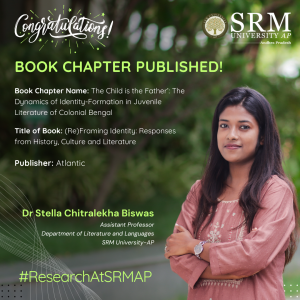 The complexities of identity in literature are a significant area of scholarly inquiry, especially in colonial and postcolonial studies. A key addition to this discourse is Assistant Professor, Dr Stella Chitralekha Biswas’ book chapter on “The Child is the Father: The Dynamics of Identity-Formation in Juvenile Literature.” in the anthology, (Re)Framing Identity: Responses from History, Culture and Literature by Atlantic Publishers & Distributors.
The complexities of identity in literature are a significant area of scholarly inquiry, especially in colonial and postcolonial studies. A key addition to this discourse is Assistant Professor, Dr Stella Chitralekha Biswas’ book chapter on “The Child is the Father: The Dynamics of Identity-Formation in Juvenile Literature.” in the anthology, (Re)Framing Identity: Responses from History, Culture and Literature by Atlantic Publishers & Distributors.
A Brief Introduction to the Book:
This anthology (Re)Framing Identity: Responses from History, Culture and Literature is a significant and timely effort to understand the issues of identity because in the postmodern age, it is one of the highly debated and discussed issues in the field of History, Culture and Literature. In the postmodern age, the question of identity with reference to literature becomes important because the monolithic idea of identity is challenged in both imaginative and critical works. The significance of this anthology also lies in the fact that it scrutinizes the process of identity formation in the Indian subcontinent and problematizes the notions of its unity and continuity across time and space philosophers. This anthology continues the tradition of the critique of identity formation right from Stuart Hall, who, in his article in Questions of Cultural Identity (1996) says, “The deconstruction has been conducted within a variety of disciplinary areas, all of them, in one way or another critical of the notion of an integral, originary and unified identity”. Therefore the purported aim of this anthology is to analyse the conflicts and amalgamation among numerous races, ethnic groups, religions, linguistic acommunities and various other stakeholders and to understand how these conflicts and amalgamations resulted in the formation of diversified identities in the light of Stuart Hall’s ideas, “identities are never unified and, in late modern times, increasingly fragmented and fractured; never singular but multiply constructed across different, often intersecting and antagonistic, discourses, practices and positions. They are subject to a radical historicization, and are constantly in the process of change and transformation”
Significance of the Book Chapter:
The understanding of identity formation has evolved from the philosophical understanding to its discursive formation and further to the neurological understanding of how identity is shaped. The fundamental idea followed in the anthology can be summed in by Stuart Hall, “actually identities are about questions of using the resources of history, language and culture in the process of becoming rather than being: not ‘who we are’ or ‘where we came from’, so much as what we might become, how we have been represented and how that bears on how we might represent ourselves. Identities are therefore constituted within, not outside representation. They relate to the invention of tradition as much as to tradition itself, which they oblige us to read not as an endless reiteration but as ‘the changing same’ not the so-called return to roots but a coming-to-terms-with our ‘routes’. They arise from the narrativization of the self, but the necessarily fictional nature of this process in no way undermines its discursive, material or political effectivity, even if the belongingness, the ‘suturing into the story’ through which identities arise is, partly, in the imaginary (as well as the symbolic) and therefore, always, partly constructed in fantasy, or at least within a fantasmatic field”. This particular analysis of identity formation in the Indian subcontinent under numerous pressures exerted through various mediums like literature, folk theatre and literature and philosophical texts not only in India but outside as well among the Indian diaspora located especially in Euro-American parts of the world, making this anthology a crucial book not only in the country but also at an international level.
Target Audience:
It is inspiriting to read such exhaustive literary anthology by eminent academicians and scholars and broadens one’s horizon of critical thinking as one goes through the collection. The book will definitely open up new trajectories of research in the field of postcolonial studies, bhasha literature and identity theory. It will also motivate students and researchers to explore the formation and representation of identities in the subcontinent in terms of culture, race, ethnicity, language, religion, caste, gender and politics.
- Published in Departmental News, English news, News, Research News


